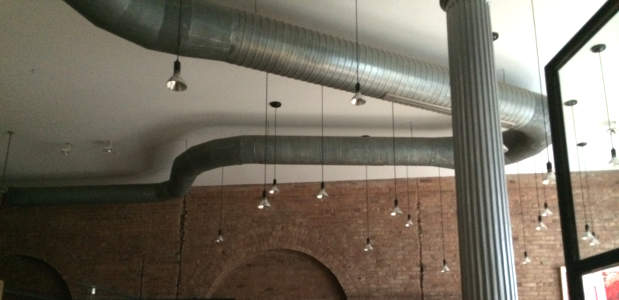
Levels for about a dozen common organic compounds were found to be two to five times higher inside the home than outside, according to the EPA’s Total Exposure Assessment Methodology (TEAM). Meanwhile, higher trending energy costs and the continuing need for energy independence has put a premium on residential energy efficiency. Ductwork – the circulatory system of your home – is one of the major component that affects both of these urgent issues. But blindly scheduled duct cleaning is far from the best course of action. Understanding the role your ducts play in your heating and cooling systems and common hazards that befall them will ensure you’re taking the appropriate action for your home.
Is it Clogged Arteries or What You Put in Them?
Too many homeowners mistakenly believe that cleaning their air ducts will improve indoor air quality. More often, external factors are responsible for poor indoor air quality, not the stuff coming from your vents. Painting and cleaning supplies with volatile organic compounds (VOCs), smoking, underground radon infiltrating your home, and even cooking is more likely to be the cause of indoor air pollution than your ducts. In fact, not a single reputable study has shown that duct cleaning improves indoor air quality. If you know you have problems with air quality in your home, chances are you need to look not at your duct system, but what it is you’re allowing into it. In the same way, if you wanted to improve poor circulation in your body, a better diet and more exercise would be the prescription, not taking a dust rag to your blood vessels.
Clean AND Inspect: Diagnose Problems
This doesn’t mean that there are no legitimate uses of duct cleaning. When mold problems arise, especially when they get behind the walls of your home, duct systems are a vulnerable spot and frequently need to be cleaned as part of the mold remediation process. Odors from deceased pests and vermin can also be a problem that requires duct cleaning. Duct cleaning costs & services should include a new air filter, one of the most important steps in heating and cooling maintenance. Finally, an evaluation of your duct system can be just as valuable as the cleaning. Noting ductwork that must travel through un-insulated attics or identifying leaks in the ductwork can help you remedy wasteful energy consumption and high utility bills.
Homeowners are beginning to realize that, while duct cleaning won’t necessarily fix issues with indoor air quality, there is still value to having ducts cleaned and inspected.
Ready to start your Duct Cleaning?
Find ProsCapillaries and Energy Exchange
Arteries and veins tend to get a lot of the attention when it comes to the circulatory system, but the ultimate goals of this system – the delivery of nutrients to cells and the removal of cell waste – occur in the miniscule and intricately configured capillaries. Likewise, it may be comforting to feel the hot air of your furnace in the winter and the cool air of your A/C in the summer, but it’s in the open air of your home where much of the system’s efficiency and quality is achieved. The ability to circulate the air throughout your home and within rooms is critical to maintaining a comfortable environment in both basements and second stories, for both your sinuses and your toes. Quality insulation and windows, especially airtight joints, are key for energy-efficiency and reasonable utility bills, but proper ventilation is more important in terms of indoor air quality.
Don’t Forget the Veins and Air Return Ducts
One of the most overlooked areas of heating and cooling and duct systems are the air return ducts. Without properly designed air return ducts, your home won’t have consistent, comfortable heating and cooling patterns. Ventilation, and thus indoor air quality, will suffer. In more serious cases, pressure will build up in your home causing undue stress on your furnace and A/C, reducing the life expectancy of your heating and cooling systems. Properly designed air return ducts will enable peripheral and/or poorly ventilated rooms to remain comfortable, and they will cycle outdoor air into your home without sacrificing energy-efficiency.
How do you know if you have properly designed air return ducts and adequate ventilation? Air return ducts and ventilation are among the more complicated design elements of a home. If you have to ask this question, it’s probably time to call your HVAC pro and ask about an inspection.
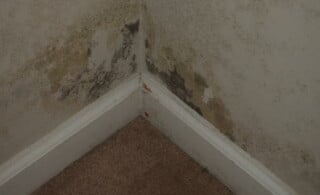 How to Remediate Mold
How to Remediate Mold 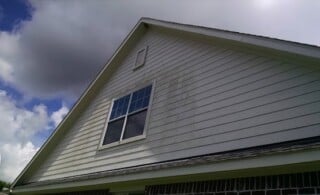 Mildew Removal
Mildew Removal  Cleaning Your Exteriors With a Pressure Washer
Cleaning Your Exteriors With a Pressure Washer 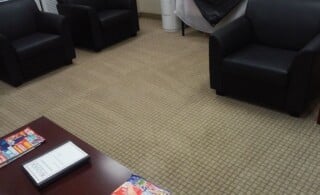 Cleaning Wool Berber Carpet
Cleaning Wool Berber Carpet 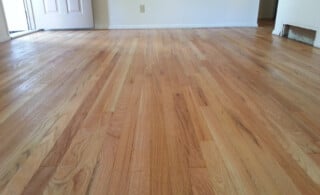 Cleaning Hardwood Floors
Cleaning Hardwood Floors 

Are You Familiar With This Topic? Share Your Experience.